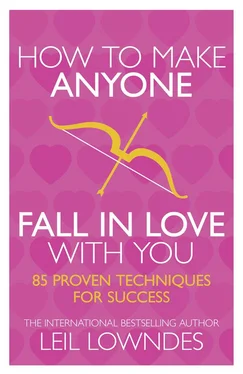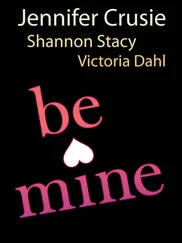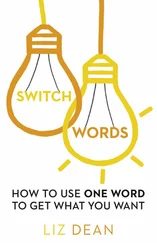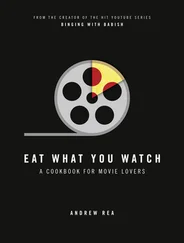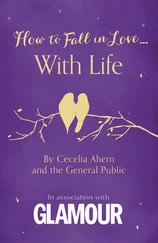Proxmire’s reaction set off an international firestorm that raged around Berscheid for the next two years. ‘Extra! Extra! Read all about it. National Science Foundation Tackles Love!’ Newspapers had a field day. Cameras and microphones zeroed in on Berscheid with gusto. The quiet researcher’s office was swamped with mail.
Proxmire’s potshot at love had backfired. Instead of putting an end to the ‘frivolous pursuit’, his brouhaha generated tempestuous interest in the study of love. James Reston of the New York Times declared that if Berscheid et al could find ‘the answer to our pattern of romantic love, marriage, disillusion, divorce – and the children left behind – it would be the best investment of federal money since Jefferson made the Louisiana Purchase’.
It was as though Ellen Berscheid had pulled her finger out of the dyke. Ever since, there has been a torrent of studies scrutinizing every aspect of love. Respected social scientists with names like Foa, Murstein, Dion, Aron, Rubin and many others relatively unknown outside the scientific world have given us an as-yet-unopened gift – a gift we will unwrap now: the results of their labours, their studies, teach us (although that was not their purpose) how to make somebody fall in love.
Granted, some of the studies do not guide us directly to that goal. To find the relevant studies, I had to comb through hundreds of scientific probings with cumbersome titles such as ‘The Implications of Exchange Orientation on the Dyadic Functioning of Heterosexual Cohabitors’. (What?) Some studies had mice listening to classical music, then jazz and blues, to see which made them hornier. 1Other studies which were worthless to our goal explored sexual attraction to corpses, 2and then there were studies on tantric motionless intercourse, 3which, I assumed, works only when a couple’s honeymoon cruise ship hits rocky seas.
Happily, many studies bore tastier and more practical fruit. Especially helpful were studies by an intrepid researcher named Timothy Perper, a PhD student who spent many hours observing subjects in his favourite laboratory, called a ‘singles’ bar’. We also benefit from brilliant examinations by Robert Sternberg and his colleagues who explored theories of love. We learn from insightful early explorations into the elements of infatuation by Dorothy Tennov and others. There were courageous, if relatively unknown, researchers like Carol Ronai. She actually took a job as a table dancer in a topless bar to record what facial expressions turn men on. 4
How More Research Was Compiled
My own first-hand research, although less daring, was no less vigorous. For more than ten years, before becoming a communications consultant and trainer, I was director of a research group I founded called The Project.
The Project was a New York City-based not-for-profit corporation established to explore sexuality and relationships. During my tenure with The Project, I interviewed and catalogued thousands of subjects on what they sought in a partner. I gathered information from the students at the dozens of universities where I was invited to speak on my research.
Like the work of researcher Ellen Berscheid, The Project experienced an unsought avalanche of attention which brought it to national attention. A Time magazine reporter covered one of our sessions and wrote a full-page article declaring ‘Sex Fantasy Goes to Broadway’, which, indeed, it did.
One arm of The Project had volunteers presenting psychodramatizations of their actual love fantasies on stage. Because there was no nudity and no explicit language, the squeaky-clean dramatizations were unique and caught the attention of the three major television networks, which presented excerpts of the vignettes on national programmes. This, in turn, spawned dozens of articles in respected mainstream publications in America and Europe.
As a result, people from all over the world sent us their stories, their fantasies, their longings for love. They called or wrote to The Project detailing precisely what they sought in a romantic partner. Most of the letters and calls we received were prefaced with comments like, ‘I’ve never told anyone but …’ The callers and writers then proceeded to divulge their deepest desires to the anonymous Project. We listened, gratefully, as we gathered data on what made, or would make, people fall in love.
How the Techniques Were Developed
Let us leave the world of sexuality for a moment. Come with me to my second discipline, the field of communications. It is here I take the findings and turn them into workable techniques to make someone fall in love with you.
It has been proved beyond any doubt that there are ways to induce desired behaviour from people. If there were not, all psychologists and thousands of corporate trainers, myself included, would be out of business. There are established methods for invoking various emotions and for changing people’s behaviour. For example, we can learn how to deal with difficult people or how to make troublesome employees respond in the desired way.
Feedback from seminars I have presented for government organizations, universities, professional associations and corporations convinces me that we can indeed effect changes in behaviour patterns. We accomplish this complex task by first understanding people’s basic needs and motivations, then by employing the right verbal and non-verbal skills to modify their behaviour.
That is what I do in this book. Drawing from the scientific studies, I reveal the basic needs and motivations that make someone fall in love. Then I give you the right verbal and non-verbal skills to induce the behaviour you want – in this case, to make that person fall in love with you.
This book is the result of many years of research and exploration into several disciplines: interpersonal relationships, human sexuality, communication skills and gender differences. We not only draw from scientific studies into the nature of love and from my personal research, but we also benefit from the work of modern therapists and communications analysts. I am especially grateful for the work of sociolinguist Deborah Tannen 5and the clever Mars/Venus analogies of therapist John Gray, 6who made it common knowledge that men and women have vastly different styles of thinking and communicating.
What is the recipe for making someone fall in love with you? Can it be reduced to a formula? The following sounds simple, but it is actually quite complicated.
You start with a solid scientific base of what makes up interpersonal attraction. Then you gather profound information about your Quarry (the person you want to make fall in love with you). Next, you employ sophisticated, often subliminal, communication techniques to meet his or her conscious and subconscious needs. Finally, you secure your Quarry with your spicy perception of precisely what he or she wants sexually. There you have it: the formula for making a Potential Love Partner fall in love with you.
How I Tested the Techniques
I was not content with simply relying on research. I needed to see if these techniques would work in the field. Several years ago, to test my theories, I created a seminar with the same title as this book, ‘How to Make Anyone Fall in Love with You’.
Invitations flowed in from all over the country from colleges, singles’ groups, clubs and continuing education organizations. It is on this playing field that the material has been tested. And the feedback from my students is, ‘Yes!’ You can make someone fall in love with you.
Is it a simple task? No.
Does it require sacrifice? Yes.
You may decide, after reading this book, that capturing his or her heart is simply not worth having to give that much of yourself. But if you do want to proceed, follow me. We will explore the skills needed to accomplish the task, to make the Potential Love Partner of your choice fall in love with you. (You notice that I have used the words Potential Love Partner several times. I will do so throughout the book because, although it is bulkier, the phrase is more accurate than anyone, which my publisher wisely decided is more readable.)
Читать дальше
